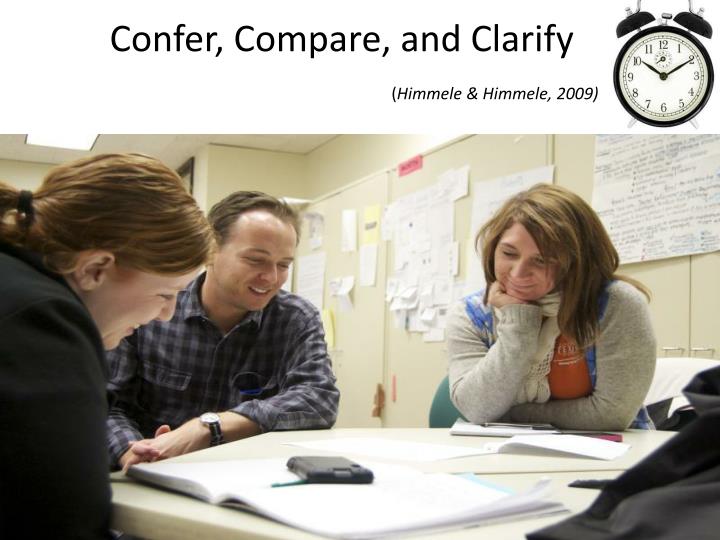Confer, Compare, & Clarify
What It Is
This activity allows students to read each other’s notes, make comparisons, and add their own notes. This gives them the opportunity to pick up tips by seeing how their peers take notes. It also allows them time to reflect on the content, compare understandings with their peers, and ask questions that can be the difference between comprehensions and lack of comprehension.
How It Works
- Ask students to pair up (or assign them pairs) and have them Confer, Compare, and Clarify.
- Confer refers to getting together and sharing a one-sentence summary of what they believe was the most important part of the presentation.
- Compare refers to students actually getting an opportunity to read each other’s notes. They should then compare what they recorded in their notes and what their peers recorded. Let students know they are encouraged to “borrow” ideas from their peers’ notes and add them to their own.
- Clarify refers to students recording any questions they have regarding what was presented
- Ask pairs to join other pairs, forming groups of four, and share questions (from the Clarify piece).
- Ask students to record the questions that could not be answered in the larger groups of four on the board in a Chalkboard Splash, or they can record these questions on scrap paper or index cards.
- Address the questions that were recorded before moving on.
How to Ensure Higher-Order Thinking
Use prompts to help students analyze the effectiveness of their own note-taking. Ask them to analyze whether or not the notes they recorded capture the most important pieces of the presentation. Ask whether or not they have picked up any note-taking tips from their friends. Remind students that note-taking is a skill that will take time and practice to develop. Ask them to analyze and reflect on the process of note-taking. What was one thing they did well and one thing they would like to work on for the next portion of the presentation. Ask students to jot down their area for improvement in the margin of their notes, or ask them all to write it on the board in a Chalkboard Splash.

Source
Himmele P., and Himmele, W. Total Participation Techniques: Making Every Student an Active Learner. ASCD, 2017, pp.93-94.
